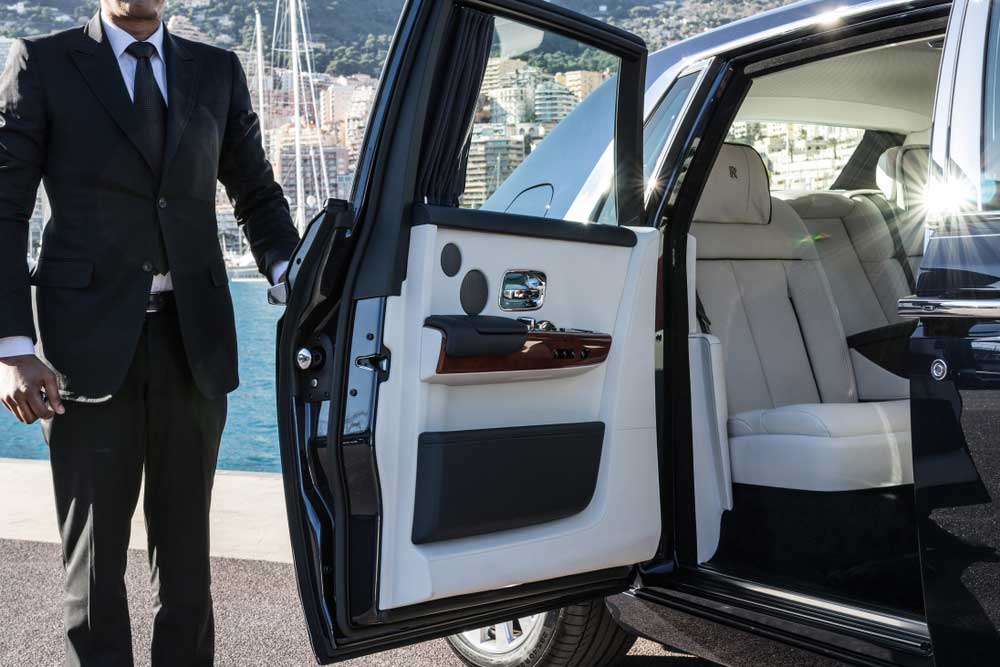Overview of the Current State of Robotics in 2024
As we dive into the holiday season, the landscape of robotics is thriving with innovation and advancements at an unprecedented pace.
Robotics technology has made significant strides across various sectors, reshaping the way we live and work. From healthcare and education to manufacturing and agriculture, robots are becoming integral to many aspects of daily life and are more advanced and capable than ever before.
One of the most notable trends in 2024 is the rise of intelligent, autonomous systems. Thanks to advancements in artificial intelligence (AI), machine learning, and sensor technology, these robots can perform complex tasks with minimal human intervention.
This year has witnessed robots that can learn, adapt, and navigate real-world environments with remarkable proficiency. It’s a great leap forward, which some of these robots can actually do.
Collaborative robots, or cobots, are also gaining popularity. These robots are designed to work alongside humans, assisting with tasks that require precision, strength, or repetition while ensuring safety and efficiency.
Companies across industries are increasingly adopting cobots to enhance productivity and reduce the physical strain on human workers.
Key Players and Companies Driving Robot Innovation:
- Tesla: Known for its electric vehicles, Tesla has ventured into the robotics arena with Tesla Optimus, a humanoid robot designed to handle tasks that are unsafe, repetitive, or boring for humans.
- Boston Dynamics Atlas: This company continues to impress with its advanced mobility robots like Atlas, which showcase extraordinary agility and balance.
- Agility Robotics: Known for Cassie, a bipedal robot capable of impressive locomotion, Agility Robotics is making significant contributions to the field of mobile robotics.
- Carbon Robotics: Specializing in agricultural robotics, Carbon Robotics has introduced innovative solutions like laser weed elimination technology, which promotes sustainable farming.
- UBTECH Robotics: With the Walker X, a versatile humanoid robot, UBTECH is pushing the boundaries of human-robot interaction and providing new possibilities for personal and professional assistance.
- DEEP Robotics’ Lynx: Capable of navigating rough and uneven terrains, making it ideal for outdoor inspections, surveillance, and disaster response.
- ANYbotics ANYmal: A quadruped robot designed for industrial applications, capable of navigating challenging environments such as construction sites or hazardous locations.
This overview sets the stage for a deeper exploration into specific robotics advancements and applications that are transforming industries and societies.
As we move forward, we’ll delve into the fascinating world of humanoid robots and their evolving role in human-robot interaction. Your Roomba may soon be out of job.
Advances in Bipedal Movement and Human-like Interactions
Both Tesla’s Optimus and UBTECH’s Walker X symbolize significant steps forward in bipedal movement and human-like interactions.
Bipedal robots need to replicate human balance and agility to be truly effective. This has long been a challenging aspect, but 2024 has seen remarkable progress.
These robots are now skating on two wheels, dancing, and even performing complex yoga poses to prove their balance skills. Personally, fetching a cocktail would be far more entertaining to us.
Additionally, natural language processing has made leaps, allowing these robots to engage in near-human-level conversation, providing responses based on the context of the interaction.
Thus, the emergence of these humanoid robots marks a seismic shift in human-robot interactions. As we continue to refine their capabilities, integrating them into our daily lives becomes not just a possibility but an impending reality.
Tesla Optimus: They Seem To Be Getting Taller These Days
Expected around $20,000–$30,000.
Tesla’s Optimus stands as a remarkable example of how humanoid robots can be more than just futuristic gadgets. Also, true to the Tesla brand, this is one handsome fellow.
The Optimus has an impeccable design, which includes multiple actuators and sensors aimed at creating seamless interactions between humans and robots.
With its 5-foot-8 frame, the robot is designed to handle daily activities and assist in tasks ranging from manufacturing to logistics. Thanks to Tesla’s work with AI, Optimus can adapt and learn, making it a highly autonomous entity.
UBTECH Walker X: Won’t Complain About Unloading The Dishwasher
Estimated around $100,000+
On the other side, UBTECH’s Walker X also offers intriguing features. With a height of 4.75 feet (we feel safer already), Walker X balances well between being compact and functional.
UBTECH Humanoid Robot Walker S1: 16.3kg Parcel Handling Challenge#WalkerS1 #humanoidrobot #industrial #robotics pic.twitter.com/ZUh1FyUppi
— UBTECH Robotics (@UBTECHRobotics) October 14, 2024
The robot is aimed more at home assistance, complete with arms equipped for delicate tasks and mobility that allows it to navigate complex home environments.
What sets Walker X apart is its integrated voice-activated system, making conversations with the robot more natural and intuitive.
Carbon Robotics‘ Laser Weed Zapper
Priced at around $500,000.
As we catapult further into 2024, robotics continues to integrate with daily life, optimizing practices across various sectors. The field of agriculture is no exception.
Leading the charge is Carbon Robotics’ LaserWeeder, equipped with three times the lasers to kill up to 200,000 weeds per hour. This breakthrough presents an efficient, automated solution for weed control, essential for sustainable farming.
Impact on Sustainable Farming Practices
The repercussions of Carbon Robotics technology on sustainable farming practices are profound. Traditional weed control methods, such as chemical herbicides, can be detrimental to both the environment and human health.
Laser weeding, in stark contrast, eliminates these concerns by targeting weeds with precision, utilizing high-powered lasers to eradicate unwanted plants without disturbing the soil or harming crops.
This method supports biodiversity, promotes healthier soil, and reduces chemical run-off into water systems.
Agricultural robotics, exemplified by the innovations from Carbon Robotics, signifies a leap toward eco-friendly and efficient farming practices. We know what you’re thinking – don’t try sticking your leg under it.
Boston Dynamics Atlas: Impressive Physical Capabilities
Estimated $100,000+
Being around for 11 years now, Boston Dynamics’ Atlas stands in a league of its own. Hey Jake Paul, Atlas, this might be more your speed – and age. Let’s get this on the calendar.
With capabilities that mimic and, in some aspects, surpass human physical agility, Atlas has become a benchmark in the field. they’re also known for super-fun videos of the robot’s skillset.
Its state-of-the-art control systems enable it to perform a wide range of highly dynamic motions, such as backflips, running, and even parkour.
The robot’s ability to maintain balance while swiftly adapting to new terrains demonstrates significant advancements in robotics engineering.
The versatility and resilience of Atlas make it a formidable tool in search and rescue operations, as well as a potential asset in industrial environments.
Agility Robotics: Cassie The Bipedal For Late-Night Ice Cream Runs
Expected to be in the $50,000–$100,000 range.
Another significant name in the sphere of mobility is Agility Robotics with its bipedal robot, Cassie. Cassie’s design focuses on efficient bipedal locomotion, which offers a stable and adept movement through various environments.
This robot’s leg architecture is highly inspired by the biomechanics of bird legs, making it exceptionally energy-efficient and capable of traversing uneven terrain.
Cassie’s ability to walk and run with great stability sets it apart, although we’ve yet to see it balance with a pint of Häagen-Dazs in its hand.
While not yet mainstream, it’s a glimpse into the future of robots that could one day replace or assist human workers in a variety of industries.
DEEP Robotics‘ Lynx: For Next Level Horror Films
Estimated $50,000–$100,000 (depending on configuration and use case).
Stepping into the realm of quadrupedal robots, DEEP Robotics’ Lynx showcases remarkable agility and stability.
Horror film directors must be licking their chops over this one. Hopefully, in the very near future we won’t have to wonder who’s the king of the forest, Cocaine Bear or Lynx – let the battle begin!
On a more serious note, by mimicking the movement of four-legged animals, Lynx is designed to navigate complex environments effortlessly.
Its robust construction and smart navigation technology enable it to move through challenging terrains with a remarkable degree of autonomy.
This makes Lynx an excellent candidate for applications in industries like mining, construction, and security, where accessing difficult-to-reach areas can be risky for humans.
ANYbotics ANYmal: Laughs In The Face of Danger
Estimated $150,000+
Although we can’t say for sure if this robot can laugh, ANYbotics’ ANYmal is revolutionizing industrial inspections with its versatile and robust design.
This four-legged robot excels in environments that are challenging or hazardous for human workers, such as offshore oil platforms, power plants, and industrial facilities.
ANYmal is capable of navigating complex terrains, climbing stairs, and even traversing through water if needed.
Equipped with advanced sensors, including LiDAR, cameras, and thermal imaging, it can conduct thorough inspections, detect anomalies, and provide precise data in real-time.
ANYmal’s ability to operate autonomously or under remote control makes it an invaluable tool for industries focused on safety and efficiency.
By taking over routine and hazardous inspection tasks, it reduces the risk to human workers and ensures that potential issues are identified and addressed promptly.
Practical Applications in Various Industries
ANYmal is not limited to industrial inspections alone. Its capabilities extend to several other industries:
- Oil and Gas: ANYmal can inspect pipelines, detect leaks, and monitor equipment health, significantly enhancing safety and reducing downtime.
- Energy: In power plants, ANYmal performs checks on turbines and boilers, ensuring optimal operation and timely maintenance.
- Construction: ANYmal aids in site surveys, structural inspections, and progress monitoring, helping to maintain project timelines and safety standards.
- Mining: The robot navigates through uneven terrains and tight spaces, assessing structural integrity and environmental conditions.
Current Deployment Success Stories
ANYmal’s deployment in real-world scenarios has been widely successful. For instance, on offshore oil platforms, have replaced human inspectors in conducting routine checks in hazardous environments, reducing the risk of accidents and increasing inspection frequency.
In power plants, ANYmal has been instrumental in identifying early signs of equipment wear and tear, preventing potential failures.
Transitioning now into the broader scope of robotics advancements, the future outlook and industry trends promise even more transformative innovations in this rapidly evolving field.
Future Outlook and Industry Trends in Humanoid Robotics
As we look to the future, the robotics industry is poised for significant advancements. With enhanced AI capabilities this will lead to smarter, more adaptable robots that can learn and make decisions autonomously. This begs the question, who needs those pesky humans?
Another breakthrough is in the development of robotic exoskeletons. These wearable robots offer incredible potential for both rehabilitation and enhancing human capabilities.
As the technology evolves, we can expect these exoskeletons to become lighter, more comfortable, and more user-friendly, expanding their applications in healthcare and industry.
Conclusion
The development of humanoid robots is another exciting area. These robots are designed to mimic human movements and interactions, making them suitable for roles that require social engagement.
The capabilities of humanoid robots are expanding rapidly, with improved bipedal locomotion, skill, and the ability to understand and respond to human emotions.











